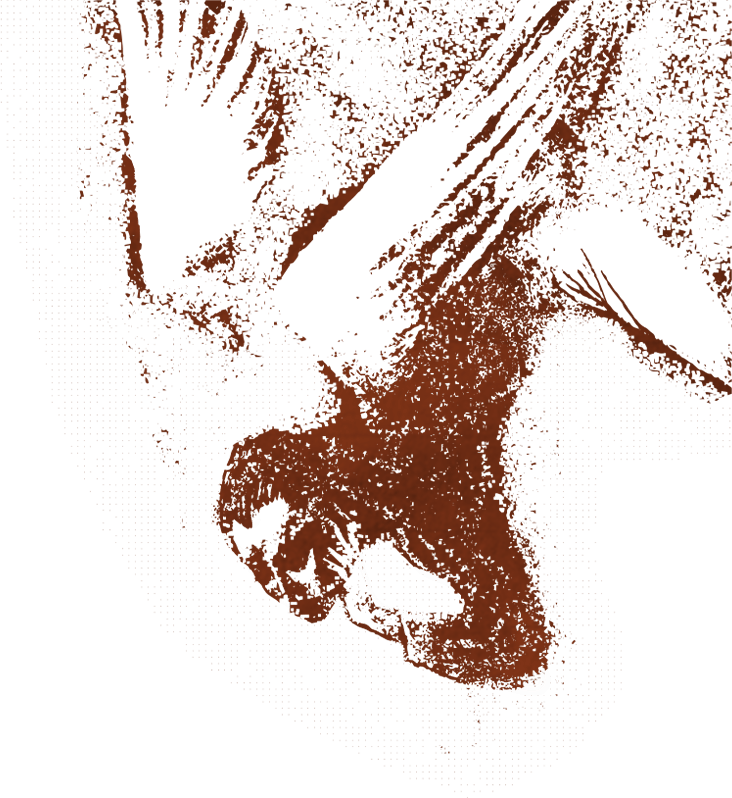Ken Sehested
Text: Romans 8:12-25
“We are lovers in dangerous times.” —Bruce Cochburn
“Faith is not belief in spite of the evidence. Faith is life lived in scorn of the consequences.” —Clarence Jordan
This text from Romans is of special significance to me. I first discovered it—or maybe I should say, was first understood it—when I was in seminary. I was in the midst of a raging internal struggle, peeling off the layers of privatized religious faith centered around the survival of my petty little ego . . . .
That’s what I thought getting saved was about—getting saved from God’s wrath and hell’s torment, kind of like getting saved from Daddy when he was angry, or getting called on in class when I didn’t know the answer—only much bigger—which means I had to straighten up, act right, say yessir and yesmam, play nice, get my homework done, strive not say any dirty words or look at dirty pictures or have dirty thoughts, and try my best to pretend I actually enjoyed going to church.
Actually, I did a fairly good job at all those things—except, maybe, the dirty thoughts part.
Despite my best intentions, when I entered seminary my heart was still governed pretty much by the theological assumption behind that bumper sticker I recently bought on-line. It has one of those traditional 19th century painting of Jesus, only in this one Jesus has one eyebrow slightly cocked upward; and the caption says:
“Flatter Jesus, or he’ll torment you in hell.”
“Faith is life lived in scorn of the consequences,” wrote Clarence Jordan.
“For in hope we were saved,” said Paul in today’s scripture text. And in the lyrical text of Bruce Cockburn, “We are lovers in dangerous times.”
Faith . . . hope . . . and love. These three abide.
Much of church history is the story of offering faith and hope, usually at discounted prices, as a kind of get-out-of-jail-free card to people afraid to match their own moral virtue against that of an insatiably prudish and severely high-minded God.
Or, in a consumerist culture like ours, hope looks like what I did every year as a kid, right after Thanksgiving dinner was finished, when I got out the new Sears catalog, turned to the toys section, and begin carefully studying each items listed. The first time through I circled all the possibilities. It was outrageous, of course—even I knew that. So I’d have to go through several more rounds of elimination to pare down to merely extravagant what would be my letter to Santa Claus.
For in hope we were saved. For in hope we are being saved. For in hope we will be saved. For the Apostle Paul, the tense of the word “save” is fluid. If you do a word study of his use of the word “save” and its synonyms, some are past tense, even more are present tense, but the majority are future tense.
And, in fact, the future tense—we will be saved—is the dominant one in this text. Not just we—we humans; much less me, my own private self. But the whole of creation, groaning as in the labor before childbirth. Waiting, groaning inwardly, hoping for adoption, for the redemption of our bodies.
[Note here there is no language about having our “souls” saved. This is an earthy, fleshy affair we’re talking about.]
It was the discovery of this text about all of creation waiting for redemption—along with a wealth of other texts that underscore the earthly, fleshy affair of salvation history—that finally unlocked my imprisonment in a theological worldview that was little more than a pious form of egotism and self-centeredness. What I was being saved from—what we are being saved from; what, finally, we all will be saved from—is exactly this kind of stingy, self-centered way of living.
“Faith, hope, and love . . . these three things abide,” Paul wrote in one of his other epistles. How do we understand the relation of these three elements?
Faith is the vision factor, the intuition that a different world is possible, that an alternative to the present world order rooted in injustice and vengeance and violence is available.
If faith is the vision factor, then hope is the confidence factor. Faith assures that something else is possible, hope marshals the assets needed to live in the direction of this vision, this new world order.
And if hope is the confidence factor, love is the operational factor. Love is Captain Picard who, after articulating a course of action, executes it with the words: “Make it so.” Love is what actually plunges us from theory to practice.
Of these three abiding things—faith, hope and love—the greatest of these is love, Paul wrote. Only because love is the actual reality check on faith and hope. Anybody can speak of faith and claim hope. Love is where the rubber meets the road.
“By this shall all know you are my disciples,” Jesus said, “if you love one another.” Not “if you have faith,” or “if you have hope,” but “if you have love.”
It’s not that love is better than faith and hope. Paul is not establishing a theological hierarchy of virtues. It’s just that love is evidence that faith and hope are actually present. Love is the incarnation, the visible shape, of faith and hope.
In the terminology of the New Testament, these three words—faith, hope and love—are often used interchangeably. The use of one often presupposes the meaning of all three. They are distinct acts in a single drama of salvation.
Most of us don’t much care for salvation talk. We associate it with religious bullying. It’s embarrassing to come up on a street preacher breathing salvation fire at the top of his lungs. Back in the days when airlines had smoking sections, I frequently booked a seat back with the smokers, thinking I’d be less likely to sit down next to someone who wanted to talk about faith, who wanted to know if I was saved, if I was born again, if I’d given my heart to Jesus. Faith talk has this deep association with religious arrogance. Which is why we tend to stay away from it, except in the confines of church life—and then only in very moderated, modernized and dispassionate terms.
I believe we need to get back to immoderate, thoroughly unmodern and very passionate terms.
I believe faith is risky business, that lives are at stake, even the life of creation itself.
I believe that faith’s claim on us is inconvenient, will interrupt the stable course of our lives, and will cause us to do things the world considers foolish, reckless, even impolite.
I believe that faith will call into question the rule of fiduciary responsibility—of making the most money in the shortest period of time; that it will provoke us to cross boundaries of political expediency, of social conformity and of cultural exclusion.
I believe that faith—faith that another world is not only possible but is assured—is the only asset which can break the political, economic and social stranglehold which currently governs the world.
And not just the world out there, but the world in here, as well, in your life and mine—for our lives, too, are too often governed by fear and regret and anxiety and fretfulness—fretfulness over the prospect of scarcity, which is to say: Fretfulness that our fates are set and there’s nothing we can do about it.
New worlds sound nice, we tell ourselves; and it’s a pleasant diversion to come here every week or so to fantasize, to engage in a kind of religious voyeurism. But the truth is that the world is not headed for salvation. The truth is the world is dirty and mean and to get along, to get even a little bit of my share, I’ve got to learn to be dirty and mean.
What images or stories do you have that indicate what faith is? Not from the Bible or some other text, but from your own life, homegrown images?
One of my favorites comes from a camping trip we took several years ago, in the Ouachita Mountains of Eastern Arkansas, with some friends from Memphis. One of our friends knows the area very well. In faith, he's a spelunker—that odd word we apply to people who like to go exploring in caves deep under the earth. Our friend is also a mountain climber, and he brought his ropes and harness along in case anyone wanted to do some repelling—another of those odd words for people who dangle down the side of mountains on a rope.
Well, we decided to give it a try—but only off a beginner's cliff of, oh, twenty feet or so high. The particular harness we used was actually very safe. It was the beginner's model. The rope was tied through it in such a way that it would slid through very slowly. And the person on the ground beneath us, holding the other end of the rope, could at any moment stop your fall in mid-air simply by pulling tight on the rope.
What better assurance could you ask for?
That's exactly what I kept telling myself as I strapped in to that harness, turned with my back to the cliff's edge, and began inching backward, feeling for the edge with my feet, reaching it, then slowly leaning backwards—backwards, I tell you!—over the edge of that cliff, finally to the point where my body was perpendicular to the vertical cliff wall, then walking—or should I say creeping—down that sheer mountain side, with every muscle begging for mercy, with nothing but a rock floor beneath me. Let me tell you, 20 feet looks a lot higher when you're at the top looking down.
Needless to see, walking backwards over a cliff, on purpose, is a very unnatural feeling. All of my common sense danger alarms were going off at once. But this is so safe, I kept repeating to myself, this is so safe.
And my self kept screaming back, The hell it is!
I finally reached the bottom of that 20-foot precipice; and after my adrenalin pump slowed enough to let my brain do some rational thinking, it occurred to me that the secret to this little exercise is very simple: You have to trust that rope is going to hold you. You can't know sure—for absolutely, positively, money-back guaranteed sure—that it will hold . . . until . . . until you put your weight on it, until it's actually too late to turn back. By then, it will either hold or it won't.
Oh, sure, you can examine the rope ahead of time. Put it through some stress tests. Make sure the rope is anchored to a solid place. Make sure the harness is in working order. But at some point you either lean back into the thin air or you don't.
And if that's not enough, you then watch your 10-year-old do the same thing!
Faith, brothers and sisters. Life lived in scorn of the consequences. We are lovers in dangerous times.
# # #
Circle of Mercy, 17 July 2005
©Ken Sehested @ prayerandpolitiks.org

